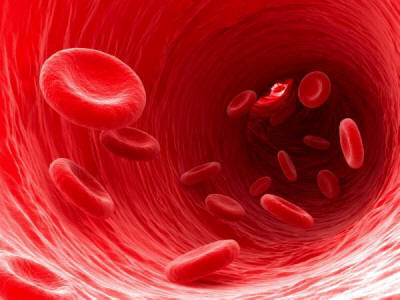|

January 26, 2011
from
ScienceDaily Website
|
The mechanism that controls the internal
24-hour clock of all forms of life from human cells to algae
has
been identified by scientists. |
Not only does the research provide important insight into
health-related problems linked to individuals with disrupted clocks
- such as pilots and shift workers - it also indicates that the
24-hour circadian clock found in human cells is the same as that
found in algae and dates back millions of years to early life on
Earth.
Two new studies in the journal Nature from the Universities of
Cambridge and Edinburgh give insight into the circadian clock which
controls patterns of daily and seasonal activity, from sleep cycles
to butterfly migrations to flower opening.

Image of blood cells.
The mechanism that
controls the internal 24-hour clock
of all forms of life
from human cells to algae has been identified.
(Credit: iStockphoto/Sergey
Panteleev)
One study, from the University of
Cambridge's Institute of Metabolic Science, has for the first time
identified 24-hour rhythms in red blood cells.
This is significant because circadian
rhythms have always been assumed to be linked to DNA and gene
activity, but - unlike most of the other cells in the body - red
blood cells do not have DNA.
Akhilesh Reddy, from the University of Cambridge and lead
author of the study, said:
"We know that clocks exist in all
our cells; they're hard-wired into the cell. Imagine what we'd
be like without a clock to guide us through our days. The cell
would be in the same position if it didn't have a clock to
coordinate its daily activities.
"The implications of this for health
are manifold. We already know that disrupted clocks - for
example, caused by shift-work and jet-lag - are associated with
metabolic disorders such as diabetes, mental health problems and
even cancer. By furthering our knowledge of how the 24-hour
clock in cells works, we hope that the links to these disorders
- and others - will be made clearer.
This will, in the longer
term, lead to new therapies that we couldn't even have thought
about a couple of years ago."
For the study, the scientists, funded by
the
Wellcome Trust, incubated purified red blood cells from healthy
volunteers in the dark and at body temperature, and sampled them at
regular intervals for several days.
They then examined the levels of
biochemical markers - proteins called
peroxiredoxins
- that are
produced in high levels in blood and found that they underwent a
24-hour cycle. Peroxiredoxins are found in virtually all known
organisms.
A further study, by scientists working together at the Universities
of Edinburgh and Cambridge, and the Observatoire Oceanologique in
Banyuls, France, found a similar 24-hour cycle in marine algae,
indicating that internal body clocks have always been important,
even for ancient forms of life.
The researchers in this study found the rhythms by sampling the
peroxiredoxins in algae at regular intervals over several days.
When the algae were kept in darkness,
their DNA was no longer active, but the algae kept their circadian
clocks ticking without active genes. Scientists had thought that the
circadian clock was driven by gene activity, but both the algae and
the red blood cells kept time without it.
Andrew Millar of the University of Edinburgh's School of Biological
Sciences, who led the study, said:
"This groundbreaking research shows
that body clocks are ancient mechanisms that have stayed with us
through a billion years of evolution. They must be far more
important and sophisticated than we previously realized.
More
work is needed to determine how and why these clocks developed
in people - and most likely all other living things on earth -
and what role they play in controlling our bodies."
Additional funding for the studies was
provided by,
-
the Biotechnology and Biological
Sciences Research Council
-
the Engineering and Physical
Sciences Research Council
-
the Medical Research Council
-
the French Agence Nationale de
la Recherche
-
the National Institute of Health
Research
|

